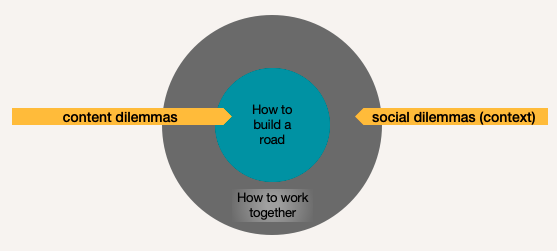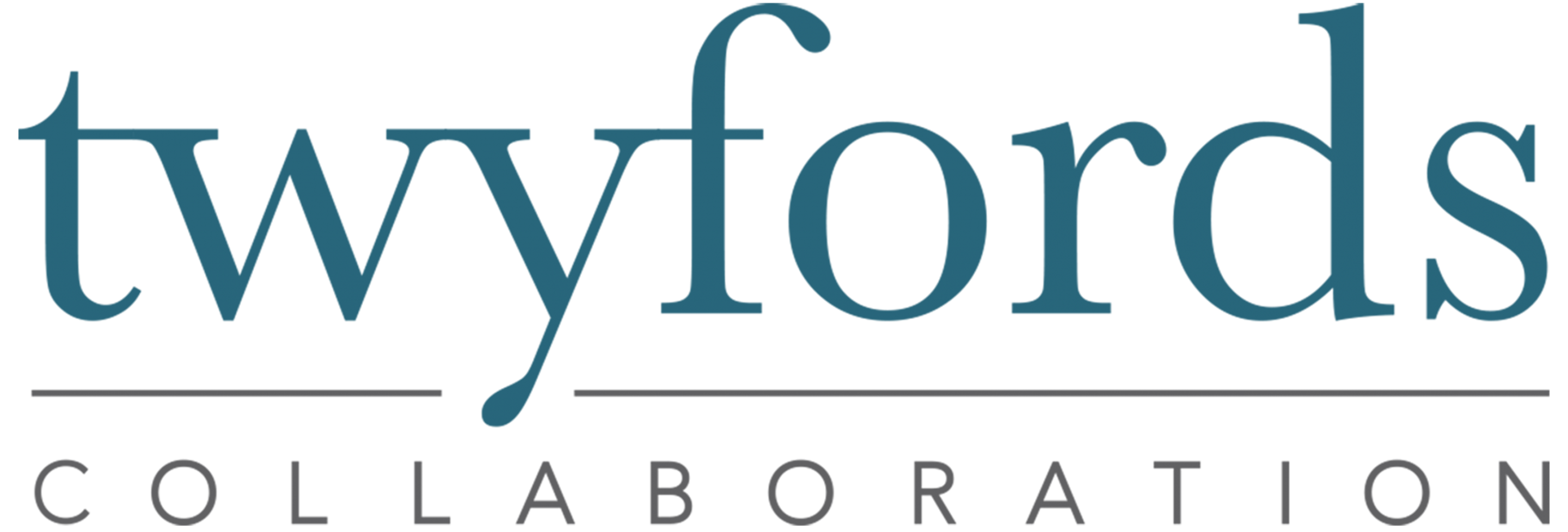Is there something other than 'othering'
The big news in Australia this past week has been all about AUKUS, the agreement between Australia, the UK and the US, at the core of which is the plan for Australia to acquire nuclear submarines.
All the talk of “us versus them” around this announcement got me reflecting again on our human talent for tribalism. I can’t help observing that there is a whole lot of ‘othering’ going on out there. No doubt I’m guilty of it myself. My question is, can anyone point to a single example where positive and constructive outcomes have arisen from othering, from highlighting differences and perceived negative traits of the other group, of defining ourselves as ‘not them’? Is there one single example from anywhere? Ever?
Surely we can find a constructive way to deal with our ancient animal urge to represent them over there as bad or threatening and us over here as good or under threat from them?
This doesn’t mean we should be naïve or wilfully blind. Rather, I think it asks us to be wilfully curious, stubbornly open minded and doggedly open hearted about the motivations and interests of other people. Perhaps even to have our ways challenged and shown to be imperfect, even as ‘their’ imperfections seem so apparent to us.
My work on a daily basis is about supporting diverse people to come together around challenging and sometimes controversial problems. It would be impossible to make progress if we focussed on differences and continued to expect ‘them’ to behave badly. Rather, success comes when people choose to listen to each other and recognise that nobody holds the ‘truth’ in its entirety; when they walk together in mutual uncertainty and collective willingness to find a way together.
The world is a challenging and sometimes dangerous place and perhaps there is a need for more submarines. But for sure we could use more investment in building bridges between peoples. Bridges sometimes do fall, but doesn’t history show us that ‘othering’ is a road to nowhere?
From Groaning to Growing With Your Collaborators
“It was hard today. It felt like we did more arguing than anything and I’m not sure we made any progress!”
I’ve lost count of how many times I’ve heard comments like this from clients. I’ve made the same comments myself from time to time. You may have too, because, let’s face it, working with diverse groups on difficult problems can be hard. We seek agreement, decisions, progress, but can’t seem to avoid frustration and exasperation as we ‘wade through treacle’.
Groan!
And those times that make us groan feel like failure. “What am I doing wrong?”
But what if you and your collaborators saw the tough times as the most useful times? What if you reframe that experience as not groaning but growing?
Yeah, I had the same reaction. But then someone pointed me to the Diamond of Participatory Decision-Making from Sam Kaner. This little framework gave me a whole new way to think about the collaborative journey and the role, even the value, of what Kaner labelled the groan zone.

What Kaner showed me was that the groaning is necessary, not evidence of failure. The tough times are the mother of innovation, invention, inspiration. That is, when we are groaning, it tells us we are doing the difficult work of collaborating on hard things together. If it was easy we would have solved this ages ago. If we are disagreeing it shows that this is important to us. And if we are challenging each other, we stand a chance of learning something new and finding novel solutions together.
Our fight or flight instincts are strong, and we tend to shy away from conflict, or do anything to avoid going there. But a quick look through clearly shows us that the urge to avoid the groaning and get to the decision is itself the thing to be avoided. When working together we need to allow time and space for divergent thinking where new ideas and new questions emerge. We need to allow time and space for convergent thinking where we get to agreement and answers. And the journey from one to the other is through the groan zone.
Yes, collaboration on complex problems is hard work. But that groaning you hear is the sound of old ideas fading and new ideas emerging. It is the sound of exploration. It is the sound of growing. Enjoy it while it lasts.
Being comfortable with discomfort
I was having recent discussions with a group of leaders at a client in the middle of a major restructuring exercise.
Our conversations had been ranging over the challenges of supporting staff through such changes, while also managing their own feelings about the potential impact on their roles.
A lot of the feedback they were hearing was about the uncertainty of what the change might mean, and the desire for more certainty.
They shared a lot about the range of emotions being reported- ranging from quite excited, through disappointment, frustration and anger, to quite fearful.
There was also a recognition that staff were reacting in various ways to the thrust and detail of the changes.
The difference in responses also surprised them, ranging from quite prepared to move on quickly to working differently, through to some staff quite resolute that nothing would need to change for them.
This generated quite a discussion in the group as to how to manage such widely varying reactions and expectations, while at the same time supporting staff the best way possible.
While the group’s inherent desire was to help “fix” the situation, there was a growing recognition that allowing people to “sit in the fire” was probably more appropriate- allowing them to take their own time and actions for appropriate pathways to emerge.
The tension for this group of leaders was the desire to “do something” to help (ie my role as a leader), while recognising that doing less may be as useful.
This felt a bit uncomfortable, weighing on the group members as it challenged their desire to know and be on top of what was happening.
But they also reflected that such new behaviour was probably a more appropriate response when facing such a significant and challenging change.
One of the group crystallised their learning quite nicely when they said “I’m getting more comfortable with the discomfort”, and reported that was also informing their actions in working with staff.
How to Disappear Completely
Sometimes when collaborating, doing less is doing more.
One of the most collaborative things I’m part of is a small . We perform an eclectic mix of songs, and among our several Radiohead numbers is one called How to Disappear Completely. As with many Radiohead songs I’m not sure what this one is about, but the message in the title resonates.
An idea I often share with those who facilitate diverse groups is that the less I do the more useful I am. It is a counterintuitive idea but I have come to realise that as I step back and stop trying to control the group, the group steps up, steps forward and takes accountability for their own work. Sometimes when collaborating, doing less is indeed doing more.
A simple example that always comes to mind is from some work I did years ago on behalf of a local council. They came to me looking for a “strong facilitator” to run a public hearing concerning a development application. The project was high profile and contentious and over many years a local group of strong voices had opposed the very idea. Knowing the hearing – essentially a public meeting – would be contentious Council seemed to be looking for someone who could control the room and ‘manage’ the ‘troublemakers’.
Initially I was tempted to suggest they hire King Kong, who might just stand some chance of meeting their need to make sure nobody misbehaved. But instead I took an opposite approach. I asked for the names and phone numbers of the obvious members of the ‘vocal minority’ and made a plan to call each of them.
I spoke to a number of people in the days before the forum. In each case I introduced myself, talked about the upcoming forum, asked if they would be there, and then I shared my dilemma with them. I told them I wanted to ensure the meeting was as useful as possible for everyone in the room. I told them what I was thinking as an agenda. I said I thought people in the room would be quite passionate, perhaps angry and checked that assumption with them. They all agreed. And I asked them how they thought I should run the meeting. What was likely to work for them and for others in the room. What would they do under the circumstances?
With their input I made some tweaks to the agenda, but that wasn’t really the point. The real intention was to signal that this was their meeting and I wasn’t there to control them, rather to help everyone in the room get what they could from a difficult conversation.
Then on the night of the event, as those I had spoken to arrived, I was able to great them, thank them for their input and check with them again what I was planning. I again invited them to help me keep the meeting constructive for everyone. As the meeting kicked off I shared with the room that I’d designed it with input from some in the room and again invited everyone to help ensure we all got what we could from the session. And then off we went.
Did everything go smoothly? No. Was there some yelling? Yes. Was I under pressure as the person at the front of the room? Sure. But at no time did I feel I needed to be King Kong. Together we navigated a tough meeting about a tough issue and all left with our dignity intact.
By letting go of the client’s (and my own) need to control people we avoided the power struggle and allowed everyone in the room to take responsibility for getting us where we needed to go. I still worked hard but by stepping back I encouraged others to step up.
In these situations we can easily be convinced that we need to be more controlling, exerting more power to ensure 'good behaviour' or 'effective outcomes' , but controlling less usually works better. This same dynamic is at play any time we work with other people. Rather than seeking more control to wrangle your stakeholders, it often pays to disappear, if not completely, then just a little.
Looking for some tips on how to manage when working with a diverse group of stakeholders? Check out some of our from our Collaboration System.
Overcoming the inertia- just try stuff
We often encounter clients who acknowledge the roadblocks to progress, but seem paralysed in their attempts to deliver substantive change.
I hear a lot of words like ‘until’ and ‘when’ and ‘if’ :
- when the restructure is complete, we can change how we work
- if only I could get commitment from the leaders, then we could try that
- we just need to get the plan sorted, then we can tackle that issue
- when we have built the strategy, we will be able to work differently
- if only people would step up and take responsibility, then I wouldn’t have to keep fixing things up
And the reality is that we never get there- we are always waiting!
It reminds me of Judy Garland and that song - ”Somewhere, over the rainbow…..” , in the hope that our dreams can come true.
Of course the last line is quite prophetic in this context- “Why, oh why can't I?”
Interestingly I also see a frustration from leaders in response to such comments…
- I’m committed, how many times do I have to tell you…?
- you don’t need to wait, we can do it now…
- they can take the lead without us….
I’m intrigued by this dynamic, and hypothesise that experimentation could be a way to break this seeming impasse.
So what might such experimentation or piloting look like?
Rather than needing to know, to wait, to be sure, then perhaps a way forward is an ‘and’ ie to do something while still waiting and planning, etc
This would mean actioning a series of small parallel actions to address the topical issue, while still working on the roadblocks:
- working in a new structural arrangement while organising the restructure
- assuming commitment is there and taking some different actions based on that assumed commitment
- trying something while developing the plan
- trying two ways to tackle the same issue rather than relying on the favoured option
- testing elements of the strategy before it is released
- saying yes to something where the natural and safe option is to say no or avoid taking it on
It would seem to make sense to select small initiatives that you feel OK to try, and that wouldn’t compromise critical aspects if they didn’t work, but may inform you with alternative pathways to success.
Perhaps just ‘trying stuff’ (and living with a degree of uncertainty) can overcome that frustrating feeling that we can’t progress.
Trusting the data in co-design
Revealing the hidden dilemmas when collaborating
I was working with a client a few years ago, and he was a bit stumped.
He was leading a team working on improving performance in the health system, and was facilitating a collaborative initiative between nurses and a number of health districts (hospitals) on the vexed question of staffing and resourcing. A big emerging issue was nurse ratios ie number of nurses to patients, and the task was to work out an acceptable level that the nurses union would support, the hospitals could afford, and was politically acceptable to the Minister.
As part of the work, his team had been trying to gather data from the health districts about the current situation, but they were struggling as the hospitals seemed unable to provide the data. He speculated on a number of technical reasons why they couldn’t get the job done, and was at his wits end as to how to proceed- “I’m out of tools in my toolkit” he said.
When he was prompted to asked some different questions ie why is it so hard to get the data?, he was able to tease out a new perspective (for him!)
He discovered that all the data was readily available, but wasn’t shared because of the lack of trust between the hospitals and his team, and the nurses union, and the Ministers staff.
The hospitals felt they would probably be disadvantaged with any solution, as had happened to them previously. They certainly didn’t feel safe to admit to that lack of trust, so the reasoning focused on the content- we don’t record that information, we can’t access those records, etc
My client’s work then shifted to building a new relationship with the hospital hierarchy to build sufficient confidence to share information that could help them tackle key issues together.
On reflection, my client recognised that they had been focused on the content aspects of the problem (ie the data), and learned new skills and thinking that enabled him to identify the less obvious contextual issues that were also critical to finding shared solutions.
Are you looking below the waterline?
When collaborating it pays to explore the hidden aspects of your complex project.
Have you heard of Lisa Blair? Last year she completed her second (!!) solo sailing venture around Antarctica, with the aim of raising awareness about climate change. You can learn about her amazing story here.
Watching Lisa’s journey I couldn't help but imagine what it would be like to sail the Southern Ocean. It’s dangerous isn’t it? After all, it’s cold down there! Has Lisa watched Titanic? Has someone told her about icebergs?
I have a thing about icebergs. As we know, most of their bulk sits below the waterline, their shape and scale and details unknown. And while I’ve never been near one, I feel I often encounter something similar when working with groups on complex problems.
Dilemmas in your content and your context
You see, when groups work together on challenging problems or projects, the problem seems visible and known. It’s the reason people come together in the first place, to deliver a project or fix the problem they can see. Yet I have learned that the bulk of the complexity usually sits invisibly below the surface. And as we all know, it’s the bit of the iceberg below the waterline that sinks the ship.
For example, on a big highway upgrade project I’ve been involved in, the visible problem is how to build the road. But poke around a little bit and it becomes clear that there is more going on. Watching the teams at work I can see that lying just under the surface are questions about lack of trust, competition, cultural differences, the need to be right and a reluctance to be seen to be wrong, to name a few. Each of these sharp angles can rip a hole in any collaboration.
Note that this is no criticism of the project teams. These types of human and relational issues are always present whenever people get together around a challenging project. My roading folks actually had the awareness to seek help to surface and deal with it. They recognised that their ‘content’ question – how do we build the road – exists in a context of social dilemmas that we might summarise as how do we work together in order to build the road?

Successful collaborators recognise both the content and the context, the visible and invisible elements of their project problem. By acknowledging the context elements and finding ways to work on them as they work on the content, great collaborators are able to make progress where other groups might founder.
Are you tackling your context as you work on your content? I will be discussing ways you can do this important work at our first collaboration workshop of the year. Register .
Take a different viewpoint
Just back from a road trip around western NSW and Victoria (a poor but enjoyable substitute for the covid cancelled skiing trip to US!)
We were keen to see some of the silo art that is proliferating across the country, and I took my camera drone to get some footage.
We spent a day exploring about 8 silos in the Victorian Mallee, and I shot each from the observation area as well as using the drone.
As I perused the footage, I was struck by the different views I was able to obtain (see video here) and how it enriched the perspective and the experience of the artwork.
It reminded me of our collaboration work- the importance of seeing more than one viewpoint when tackling a complex situation, and being able to obtain the various perspectives from those involved to build a clearer and more complete picture of the situation prior to seeking solutions.
It also reminded me how challenging it can be to draw in those perspectives and how we may need to get creative to see and understand those other views (we don’t always have a drone!)
Just Try Stuff....
I was prompted by Stuart’s blog to dig a little deeper into one of the learnings from the pandemic.
“Just try stuff” was about recognising that a key characteristic of a complex situation like a pandemic is uncertainty about what to do, and about the only thing you can do is to try something and see what works.
We have seen that happening constantly through the last 18 months, both in responding to the health crisis, and also dealing with the social and economic consequences.
What has been interesting to me has been the shift from an initial belief that we knew what to do and could predict and plan actions, to a growing realisation in the value of trying a range of approaches, while keeping a close eye on the results, and then modifying quickly based on the results.
Now while it did seem a bit like they were “experimenting” on us, there is little doubt that keeping everyone as safe as they could while learning what worked has been a feature of the response worldwide.
And while our leaders have copped some criticism for their approaches- slow to respond, inconsistent, etc, perhaps they were being judged by conventional thinking that just doesn’t work when challenged by this level of unprecedented complexity.
The features I think we learned around action planning that we can take into our ongoing co-design activities include:
- feeling a bit uncertain is a characteristic of tackling complex situations
- it’s OK to be unsure what to try next
- letting go of the “right answer” is hard but appropriate
- multiple small and short “experiments” make much more sense when tackling complexity
- keeping the activities “safe to learn” is key to gaining support
- reviewing progress regularly against the goals provides confidence
- and not being afraid of ending something and trying something else based on the results
So while we still haven’t yet “solved” the pandemic, it has allowed our political, business, health and community leaders to see that “trying stuff” rather than always knowing what to do is a useful alternative approach in our complex and ever changing world.
Turn rejection into collaboration
I was reflecting on Stuart’s recent blog about how we tend to hold our “right” position and not look deeper, and it made me wonder about a situation I had recently with a client.
The client was frustrated by the reluctance of a group of engineers doing some cultural awareness training to help working with a group of indigenous stakeholders.
What I was hearing were comments like…
“I’m over their rejection of training”, “I can’t be bothered trying to help them? , “If they don’t want to learn, why should I worry?”
It felt to me like an example of ‘weaponizing’ rejection or disagreement, as one might do to make a difficult situation feel OK.
A bit like finding someone to blame- “I’ve done all I can, it’s up to them whether they sink or swim”
Now while it must feel very exasperating, it’s probably not very helpful in terms of getting the desired outcome of working well together.
I pondered what a different response might look like if I was in his shoes.
I could just ignore their supposed ignorance, but it might be more helpful (and probably more satisfying in the end) to seek to remove some of the barriers to their involvement.
So I had two thoughts:
- I might not be aware of what those barriers are, so I might first step back and check my assumptions which might include things like…
- maybe I don’t understand why they are not interested, so I just assume they don’t want to learn
- maybe I’m not communicating the value effectively, so they can’t see why to spend the time
- maybe their workload is such that such training cannot get sufficient priority
- and then I could act ‘as if’ they want to learn- based on my new understanding and appreciation- and create space for people to step into …
- seeking input from those involved on the best way for them to learn about the indigenous stakeholders
- rearranging workflows to allow space and time for learning
- listening to their perspectives on the topic and seeking their input on best ways forward
So while rejection is frustrating, it’s still an opportunity for collaboration.










